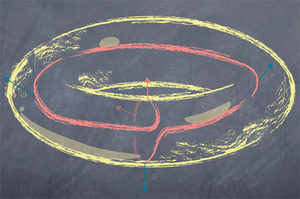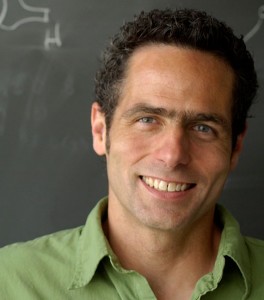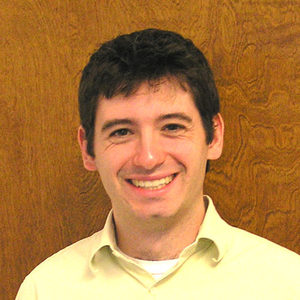Mathematicians Solve 45-Year-Old Kervaire Invariant Puzzle
A trio of mathematicians has solved a 45-year-old mystery about the shape of high-dimensional spaces by showing that all “framed” shapes of dimension higher than 126 — shapes that are impossible to visualize, but that can be described by equations — are related in a certain fundamental way to spheres.
Their finding has startled mathematicians, many of whom expected the opposite to be true. Over the past four decades, many mathematicians have tried — and failed — to settle the question.

Illustration by Courtesy of Michael Hopkins/University of Edinburgh
“I don’t think anyone had any idea this was going to be solved in the next 20 years,” said Mark Hovey, a mathematician at Wesleyan University. “The new method shows a path up a previously inaccessible mountain.”
The new finding, by Michael Hopkins of Harvard University, Michael Hill of the University of Virginia in Charlottesville, and Douglas Ravenel of the University of Rochester in New York, concerns manifolds, shapes that are made by gluing together pieces of ordinary — though possibly high-dimensional — Euclidean space.
The research bridges two different ways to study these shapes. One method, called topology, is concerned with the way a shape is connected up — that is, which of the shape’s qualities remain unchanged if the shape is stretched and distorted without being torn. The other method, called differential topology, studies shapes that are smooth enough to allow the use of ideas from calculus, such as tangent lines and derivatives.
Video: Kervaire Conjecture Animation
Video: Michael Hopkins Lectures on Work Behind the Kervaire Invariant
Video courtesy: University of Edinburgh
In 1956, John Milnor, now at the State University of New York at Stony Brook, astonished mathematicians by showing that in dimension 7, there exist manifolds that have the same topology as an ordinary seven-dimensional sphere, but have a different differential structure. In other words, these manifolds — now known as exotic spheres — are each connected up in the same way as a sphere, but are so bumpy that calculus works differently on each one.
The natural next questions were, in what other dimensions do exotic spheres exist? Where they do exist? And how many different ones are there?
In the 1960s, Milnor and the late Michel Kervaire, and then William Browder of Princeton University, took a stab at answering this question. They showed that in almost all dimensions, every manifold — or more precisely, any “framed” manifold, a technical restriction — can be converted into an exotic sphere by performing a process called surgery. In surgery, a part of the manifold gets drilled out, and a new piece is glued in along the boundary of the excised piece. Thus, the researchers showed, if mathematicians can get a handle on which manifolds are related to each other via surgery, they can figure out how many exotic spheres there are.
The work of Milnor, Kervaire and Browder left an important gap. They didn’t know what happens in dimensions of the form 2n – 2, for whole-number values of n: that is, dimensions 2, 6, 14, 30, 62, 126, 254, 510, etc. In these dimensions, it was conceivable that some manifolds might exist that could not be converted into spheres via surgery — manifolds with such complicated topological twists and turns that even surgery could not trim away their unusual features.
Building on algebra developed by the late Turkish mathematician Cahit Arf, Kervaire defined an invariant of a framed manifold — that is, a number determined by the manifold’s topology — that measures whether the manifold could be surgically converted into a sphere. This number, called the Arf-Kervaire invariant, evaluates to 0 if the manifold can be converted to a sphere, and 1 otherwise. The researchers showed that in any given dimension, there are only two possibilities: either all manifolds have Arf-Kervaire invariant equal to 0, or half have Arf-Kervaire invariant 0 and the other half have Arf-Kervaire invariant 1.
In the 1970s and 1980s, mathematicians discovered that framed manifolds with Arf-Kervaire invariant equal to 1 — oddball manifolds not surgically related to a sphere — do in fact exist in the first five dimensions on the list: 2, 6, 14, 30 and 62. A clear pattern seemed to be established, and many mathematicians felt confident that this pattern would continue in higher dimensions.
“It’s as if there is an emerald mine, and you’ve pulled out five emeralds,” Ravenel said. “You hope there are infinitely many more, if you can just get the shovels to dig them out.”
Researchers developed what Ravenel calls an entire “cosmology” of conjectures based on the assumption that manifolds with Arf-Kervaire invariant equal to 1 exist in all dimensions of the form 2n – 2. Many called the notion that these manifolds might not exist the “Doomsday Hypothesis,” as it would wipe out a large body of research. Earlier this year, Victor Snaith of the University of Sheffield in England published a book about this research, warning in the preface, “… this might turn out to be a book about things which do not exist.”

Just weeks after Snaith’s book appeared, Hopkins announced on April 21 that Snaith’s worst fears were justified: that Hopkins, Hill and Ravenel had proved that no manifolds of Arf-Kervaire invariant equal to 1 exist in dimensions 254 and higher. Dimension 126, the only one not covered by their analysis, remains a mystery.
The new finding is convincing, even though it overturns many mathematicians’ expectations, Hovey said.
“After so many false proofs over the years, you start being suspicious, but this is completely different,” he added. “Their new method is very powerful. It’s clear that it is going to work.”
The trio had not set out to prove the Doomsday Hypothesis, Ravenel said. Rather, they had been working for several years on a different problem, when they realized almost a year ago that it was connected to the Arf-Kervaire invariant question.

“Everyone else was knocking on the front door of the Arf-Kervaire problem, but we were investigating a house down the street,” he said. “Then we found a tunnel that led to the Arf-Kervaire problem.”
At first, the three researchers thought that they would have to do an extremely intricate calculation to make the leap from their research to the Arf-Kervaire problem. As a warm-up, they did what Hopkins called a “toy example,” to see if that type of calculation worked in a simplified setting. At a week-long conference in Mexico, Hopkins showed the calculation to his former thesis advisor, Mark Mahowald — an emeritus professor at Northwestern University — who had studied the Arf-Kervaire problem for decades.
“By the end of that week, after a lifetime of believing that these things existed [in all dimensions of the form 2n – 2], he believed that we were going to get it and that these things would exist in at most six dimensions,” Hopkins said. “It’s hard to explain what it feels like when the person whose mind you admire most has spent most of his career thinking about a problem, and then you solve it.”

In February, the three researchers had what Hopkins called “a radically new idea” that simplified the calculations and allowed them to reach their goal. “It was a thrilling, obsessive sprint where we thought of nothing else for six months,” Hopkins recalled. “Now I understand why authors are always dedicating their books to their family.”
Once the researchers were sure their surprise finding was correct, they kept it under wraps for a couple more months, saving their big announcement for a major conference in Edinburgh on geometry and physics last April, honoring the famous mathematician Sir Michael Atiyah. To heighten the surprise, Hopkins even gave his talk a fake title so attendees would have no clue what they were about to hear.
While some mathematicians may have been disappointed to have an entire cosmology of conjectures wiped out in a single stroke, the glass may be seen as half empty or half full. It’s true that, with the possible exception of dimension 126, there are no more emeralds in the mine — no more manifolds so bumpy and twisty that they cannot be surgically converted to an exotic sphere. Then again, Hill observes, since in these high dimensions every manifold can be converted to an exotic sphere, “in some sense there are twice as many exotic spheres as we thought.”
Even though the new finding has killed off an entire cosmology of ideas, it is more a beginning than an end. “Finding something that wasn’t predicted using the standard tools is really exciting,” Hill said. “It shows that the great pictures we have so far are incomplete.”
And while many mathematicians may have been hoping that there would be infinitely many emeralds in the mine, in some ways it’s even more exciting to find out that there are at most six, Hopkins said. These few emeralds will join the pantheon of famous collections of geometric objects that happen only a few times, such as the Platonic solids, of which there are only five — cube, tetrahedron, octahedron, dodecahedron and icosahedron.
“After one of my talks on our work, Igor Frenkel [of Yale University] said to me, ‘God has given you a beautiful gift. When there are only six of something, each one is very beautiful’,” Hopkins said.
At this point, Hopkins understands why there are just five or six special dimensions “on the level of a car mechanic, in the way Mr. Scott on Star Trek knew how to keep the Enterprise running — I know how the machine works, in my bones,” he said. “We don’t have enough distance yet to give a philosophical reason why there are at most six. But I think over the next few years, our proof will simplify greatly, and we’ll have some very natural constructions of the list of six.”
In cracking the Doomsday Hypothesis, the researchers created a whole new set of techniques that will inform many unsolved problems, predicts Nicholas Kuhn, of the University of Virginia in Charlottesville.
While the new finding has cleared up the relationship between exotic spheres and surgery on manifolds, it remains an open — and exceedingly difficult — problem to classify fully the exotic spheres. “I don’t expect this to be solved in my grandchildren’s lifetime,” Ravenel said. “It’s a very hard problem that has kept the subject going for decades.”
Applications of algebra to a problem in topology – by Michael Hopkins


